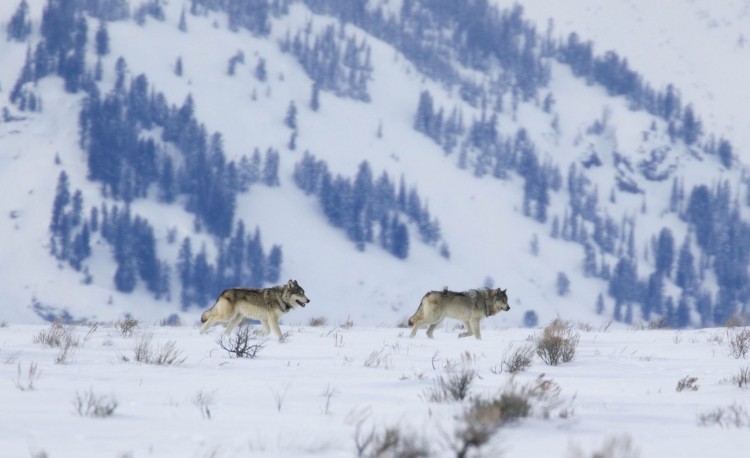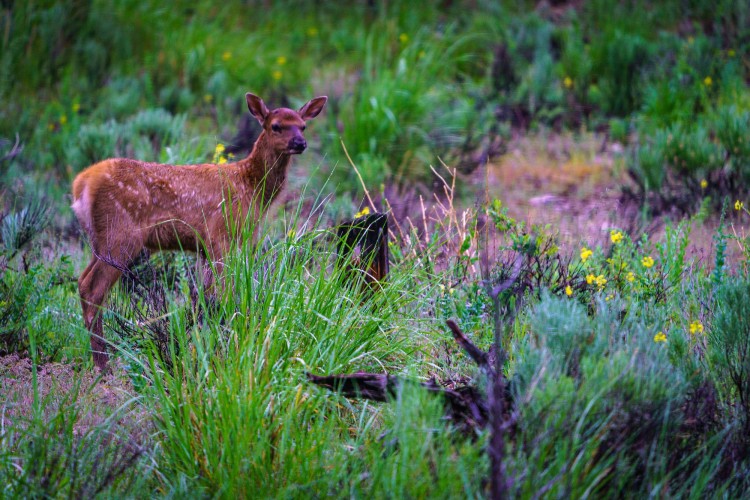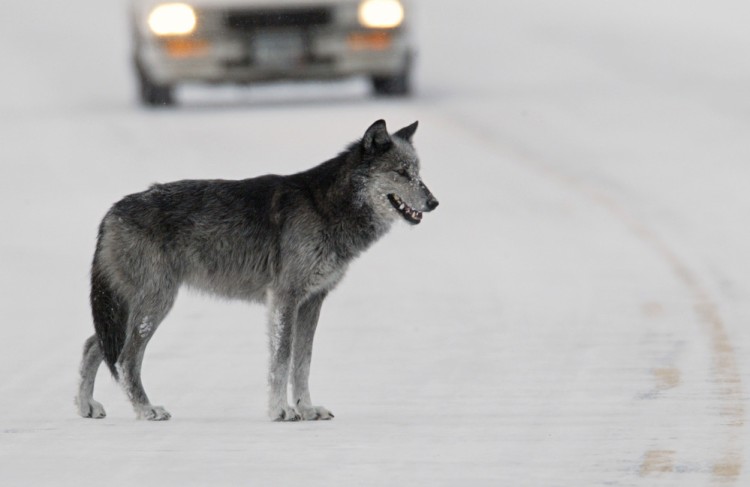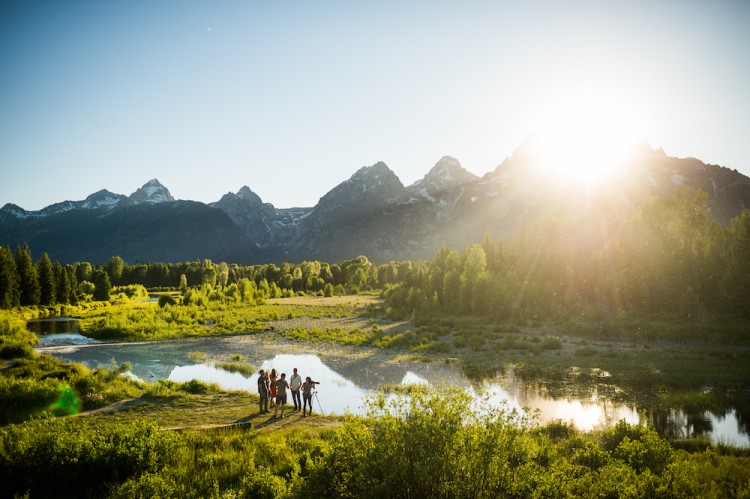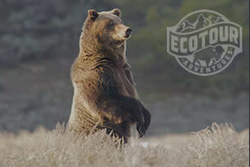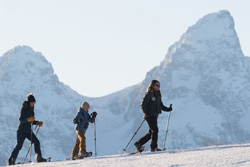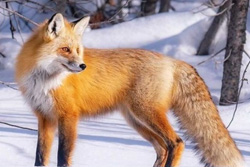Jackson Hole Wildlife Log Late February 2017
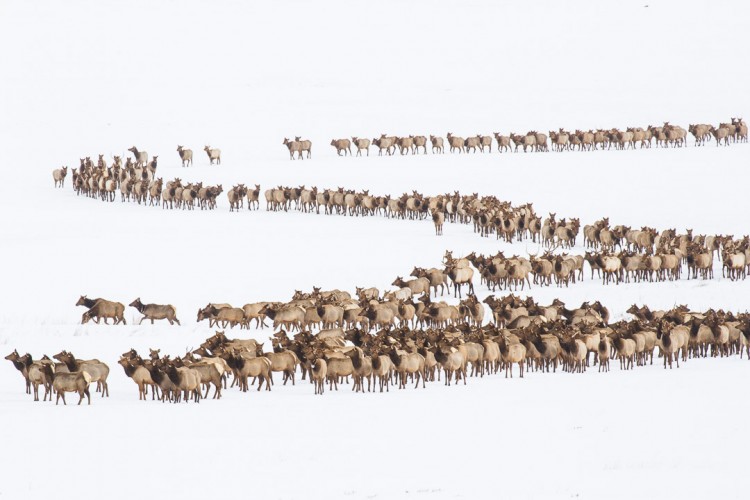

Despite persistent storms and snowfall, late February was characterized by signs of spring. As days grow longer, changes are happening in the Greater Yellowstone Ecosystem. Some animals are preparing for the coming summer, returning to nest sites, courting partners, or even mating. Other animals are simply enduring, attempting to wait out winter’s grasp before spring’s rush of life returns. We’ve had some exciting sightings in the past two weeks, including wolves, new bird species, nesting bald eagles, and more as the battle for life during winter in Jackson Hole’s continues.
Season of the Wolf
By now prey species like elk, moose, and deer are starting to show signs of strain from the long winter, which still has close to two months to go. Mule deer have been spotted using habitat on the National Elk Refuge, possibly in response to deep snows on their typical winter range. Guides observed cow elk dominance displays several times on the refuge, as elk compete for scarce food sources.
Warm temperatures and rain earlier in the month have created a supportable crust, allowing smaller predators like wolves and coyotes to travel rapidly across the snow surface. Moose, which can weigh around 1000 pounds, are punching through the crust, struggling to move in the deep snows. To avoid this, they often walk in rivers or streams to approach food such as cottonwood trees or willow branches.
Predation studies by Grand Teton National Park biologists have found hunting success dramatically increases in February due to this snow crust. Wolves and sometimes packs of coyotes are able to overtake larger and heavier animals who are also weakened by poor forage quality at this time of year.
Signs of Spring
Our wild dog species; coyotes, foxes, and wolves, all mate during January and February preparing for a 60 day gestation period. The increase in food availability during this time and the spring is ideal for reproductive success, and we look forward to spotting young ones starting in May and June!
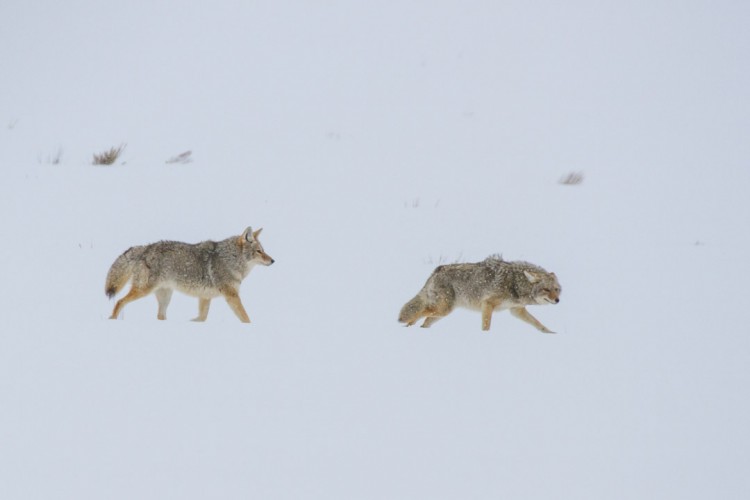
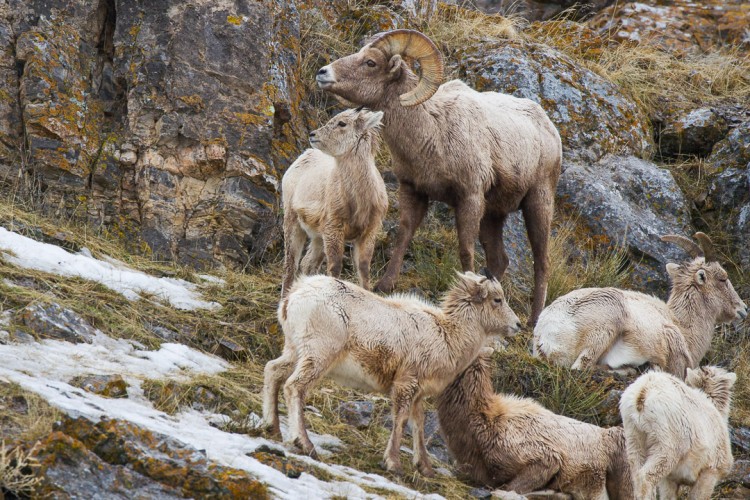
Eagles, Owls and Rare bird alert
Eagles are also indicating the coming spring by returning to nest sites or establishing new ones. Good nesting territory is hard to come by and mating pairs will defend sites aggressively, returning to the same ones year after year. Ecotour guides recently found a pair establishing a new site by remodeling a red-tailed hawk nest. They are currently adding sticks to increase the size which will need to fit up to 4 eaglets!
Great Gray Owls are largely absent from the valley but will be returning soon to reunite at nest sites they have selected in the fall. Pairs call to each other to locate after a winter apart, a repeated deep “wooooooo, woooooo, woooooo.”
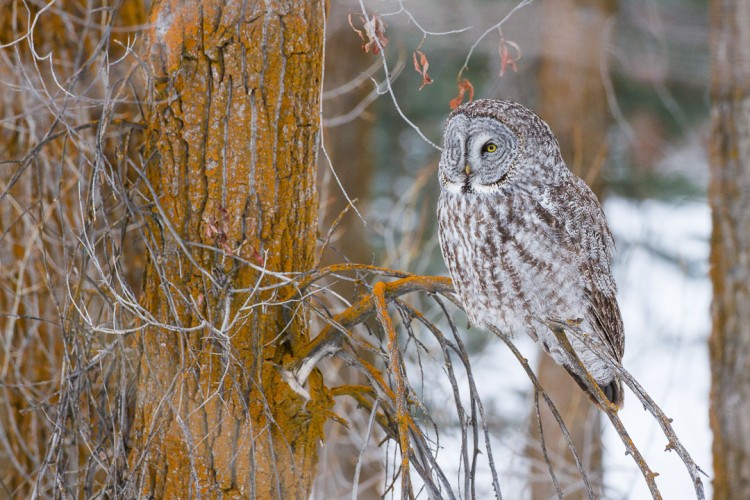
In a more rare sighting we found a male hooded merganser last week on Flat Creek near Jackson! A stunningly beautiful duck species, hooded mergansers are thought to be migrants in Wyoming, with only a few documented nesting sites. They are most commonly observed in winter and are an exciting find for birding enthusiasts. Though they are an uncommon sighting for us, hooded mergansers actually have fairly robust populations and are identified as a 'species of least concern' by the IUCN.
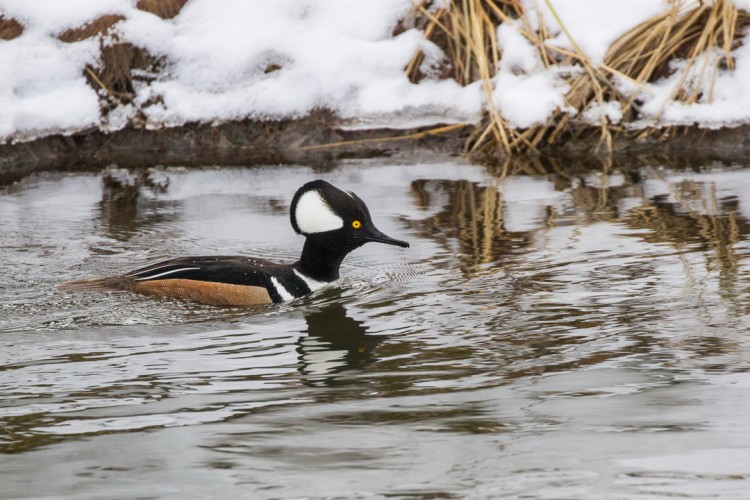
The coming spring
Though winter will retain its grasp on the Greater Yellowstone Ecosystem for over a month more we can’t help but anticipate the coming spring. Soon our big game species will begin the fantastic migrations which sustain this landscape, leaving the valleys and following the flush of life from melting snows. Migratory birds, some coming from as far south as Argentina will return to the bounty of summer beneath the Teton Range. And grizzly bears, now slumbering beneath an insulated blanket of snow, will emerge to a world full of life. Ecotour Adventures operates 365 days a year, come join us to explore the Greater Yellowstone Ecosystem Today!
To learn more about going on an Ecotour Adventure visit our website or call (307) 690-9533. We hope to see you soon!
Photos and blog by Naturalist Josh Metten


